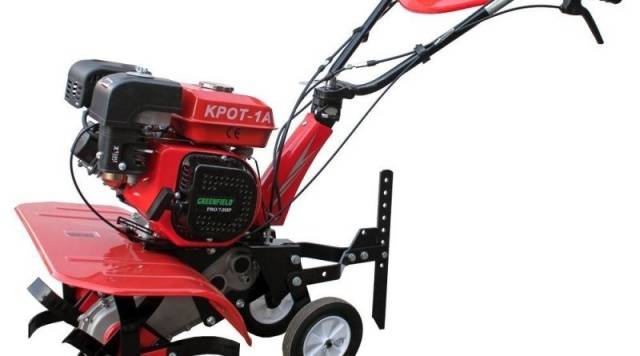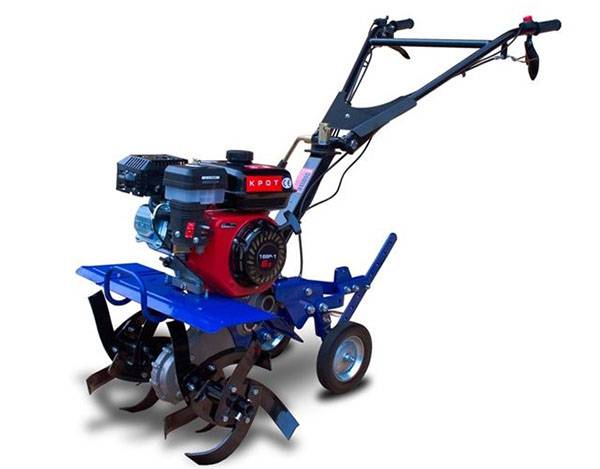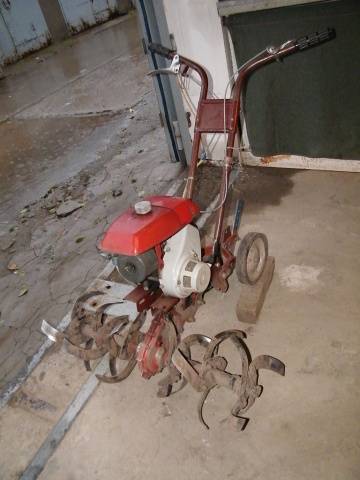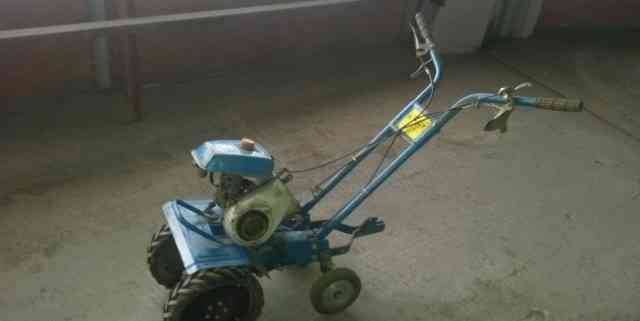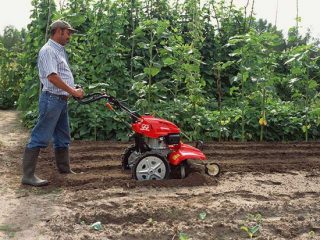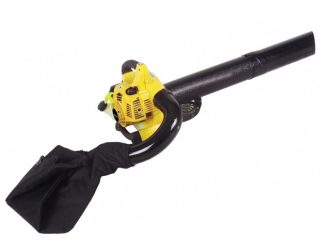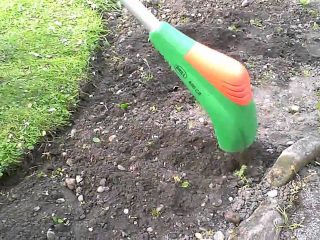Content
The production of domestic motor-cultivators of the Krot brand was established at the end of the 80s. The first model MK-1A was equipped with a 2.6 liter two-stroke gasoline engine. from. The launch was carried out from a rope manual starter. Initially, the equipment was intended for processing small vegetable gardens in the country and working inside the greenhouse. The modern motor-cultivator Krot presents an improved model MK-1A. This technology is already equipped with a powerful forced air-cooled engine.
Review of popular models
The approximate dimensions of the equipment are within:
- length - from 100 to 130 cm;
- width - from 35 to 81 cm;
- height - from 71 to 106 cm.
The dimensions of the Mole cultivator depend on the model, and may change with the improvement of technology.
Motor-cultivator MK-1A
Let's start the review of Mole cultivators with the MK-1A model. The unit is equipped with a 2.6 hp two-stroke carburetor engine. A rope crank is used as a starter. A gasoline engine with a gearbox has a simple bolted connection to the frame. The fuel tank is designed for 1.8 liters. Such a small volume is due to the low fuel consumption. The unit can be refueled with cheap AI-80 or A-76 gasoline. To prepare the fuel mixture, machine oil of the M-12TP brand is used. The cultivator weighs only 48 kg. Such equipment is easy to transport to the dacha by a car.
All control elements of the motor-cultivator are located on the handles, namely:
- clutch lever;
- throttle control lever;
- carburetor flap control lever.
The Krot MK-1A model is capable of working with attachments. A motor-cultivator is used for watering, mowing grass, soil cultivation and planting maintenance.
Motor-cultivator Krot 2 with reverse
A design feature is that the Mole cultivator has a reverse and a powerful engine. This enables the consumer to get a real walk-behind tractor for little money. The unit is powered by a 6.5 liter Honda GX200 four-stroke gasoline engine. from. Mole 2 has electronic ignition, a power take-off shaft, a 3.6 liter gasoline tank. The torque from the motor to the chassis is transmitted by a belt drive.
Among other motorcycles with similar characteristics, this model of the Mole takes the first positions in reliability. These indicators were achieved thanks to a powerful single-cylinder motor and a reliable gearbox. The engine service life is 3500 hours. This is quite a lot compared to the old models of the Mole cultivator, which had a motor resource of up to 400 hours.
The power of a motor-cultivator with a reverse gear is enough for the cutters to capture a 1-m wide area. The operating instructions from the manufacturer's plant says that the Krot 2 motor-cultivator is able to expand its functionality through the use of attachments. So, the equipment can become a snow blower or a mower, a vehicle for transporting goods, a machine for performing many agricultural works.
In the video, we suggest watching an overview of the Mole cultivator:
Operating manual for the Krot motor cultivator
So, we found out that the modern Mole cultivator has almost all the functions of a walk-behind tractor. Now let's take a look at what the instruction manual for the equipment in question says:
- The direct purpose of the cultivator is plowing the land. This is done using cutters that are mounted on the shafts of the gearbox. The transport wheels are raised during plowing. A coulter is attached to the rear of the trailed shackle. It is used as a brake and also to adjust the depth of soil cultivation. The cultivator moves due to the rotation of the cutters, while simultaneously loosening the soil. The unit comes with two internal and external cutters. The first type is used on rough soil and virgin soil. Light soil is loosened with both cutters, and a third set can be added. Buy it separately. As a result, there are three cutters on each side, and in total there are 6 pieces. Eight cutters cannot be placed on the Mole cultivator due to the increased load on the motor and transmission.
- When weeding weeds carry out re-equipment of the mechanism. The knives are removed on the internal cutters, and weeders are placed in their place. These details are recognizable by the L-shape. External cutters are replaced with discs. They are also sold separately. The discs are needed to protect plants, preventing them from falling under the weeder. If weeding is carried out on potatoes, then preliminary hilling can be carried out at the same time. For this, the rear-mounted opener is replaced with a hiller.
- When you need to huddle potatoes, cutters are not needed. They are removed from the gearbox shaft, and steel wheels with welded lugs are placed in this place. The tiller remains in place where the opener used to be.
- During the harvesting of potatoes, the same metal lugs are used, and behind the cultivator, the opener is replaced with a potato digger. This type of attachment is available in various modifications, but fan models are usually bought for cultivators.
- Plowing the land can be done not only with milling cutters, but also with a plow. It is attached to the rear of the machine in place of the coulter. The steel wheels remain in place.
- The unit can be used for haymaking. You just need to buy a mower and fix it in front of the unit. Rubber wheels are put on the shafts of the gearbox. The transmission of torque is provided by belts put on the pulleys of the Mole cultivator and mowers.
- The mole is perfectly capable of replacing the pump for pumping water. You just need to purchase the pumping equipment MNU-2, fix it on the frame and connect it with a belt drive. In this case, it is important not to forget to remove the belt from the traction gear.
- The motor-cultivator copes well with the transportation of small-sized loads weighing up to 200 kg. Here you need a trolley with a swing-coupling mechanism. You can purchase a factory-made model TM-200 or weld it yourself from metal. During the transportation of goods, rubber wheels are put on the shafts of the gearbox.
As you can see, thanks to the additional equipment, the multifunctionality of the Mole is significantly expanded.
Modernization of the MK-1A model
If you have an old Mole model, do not rush to throw it away. Why then overpay when buying a new cultivator for a frame, gearbox and other parts, if they already exist. You can get by with a simple replacement of the motor.
The old engine can be replaced with a four-stroke LIFAN - 160F. The Chinese motor is not expensive, plus it has a capacity of 4 liters. from. According to the passport, the MK-1A motor cultivator, when processing the soil with cutters to a depth of 20 cm, needs to add revolutions. You don't need to do this with a new motor. Even with an increase in engine power, the processing depth has changed, and now it reaches 30 cm. You should not count on a great depth, since the belt will begin to slip.
Installing a new motor on an old frame is not difficult. All mounts are practically compatible. The only difficulty is that you will need to rework your own pulley.It is removed from the old motor, an internal hole is drilled for the diameter of the shaft of the new engine, and then inserted using a key.
If, when removing the pulley, it accidentally cracked, do not rush to run after a new one. You can try to restore it using cold welding. How to do this, it is better to tell in the video:
A mole is considered not a bad technique for a small area, but it is not worth asking him to perform super-difficult tasks. For these purposes, there are heavy walk-behind tractors and mini-tractors.
